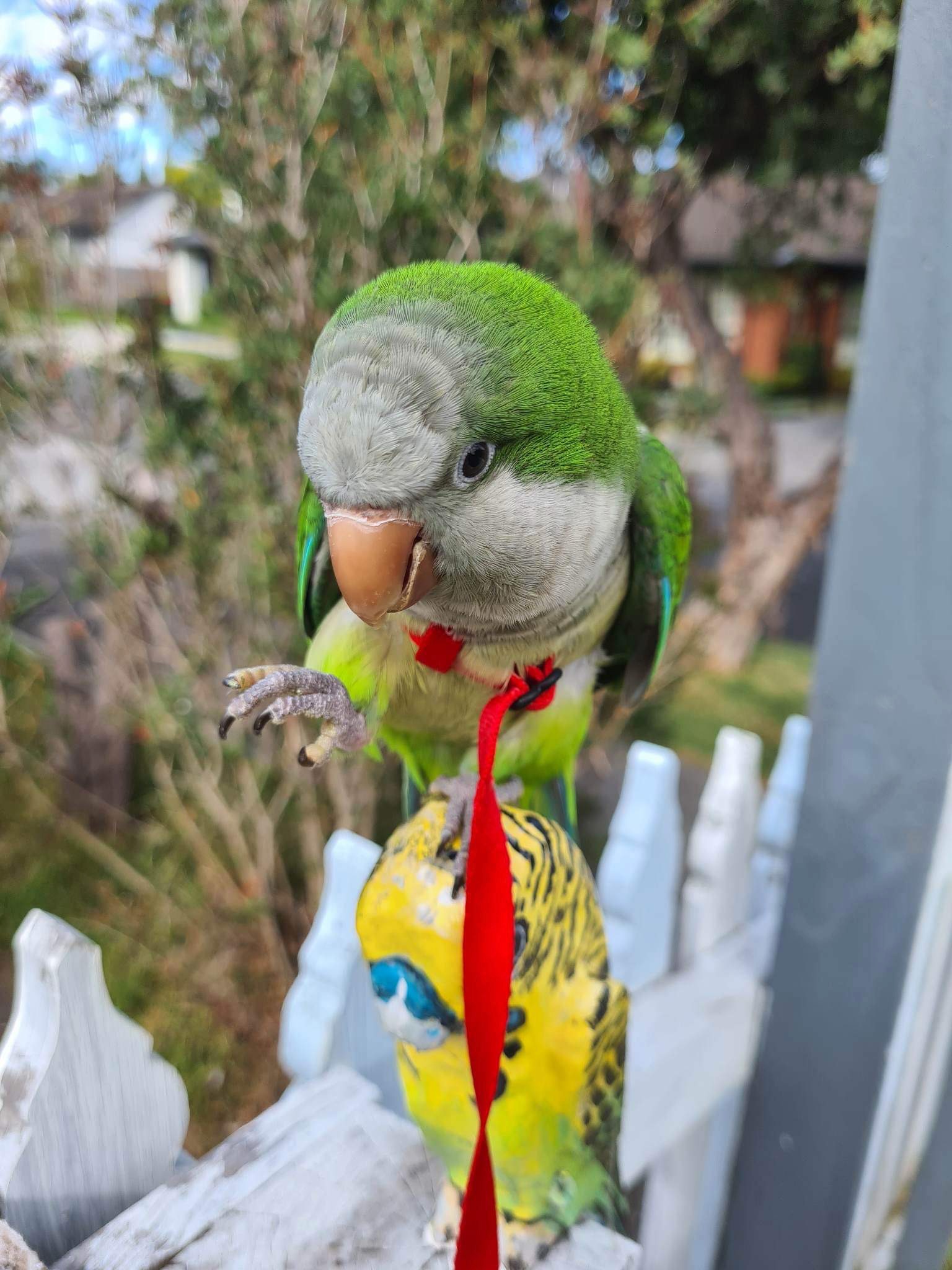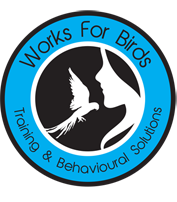Harness Training Birds
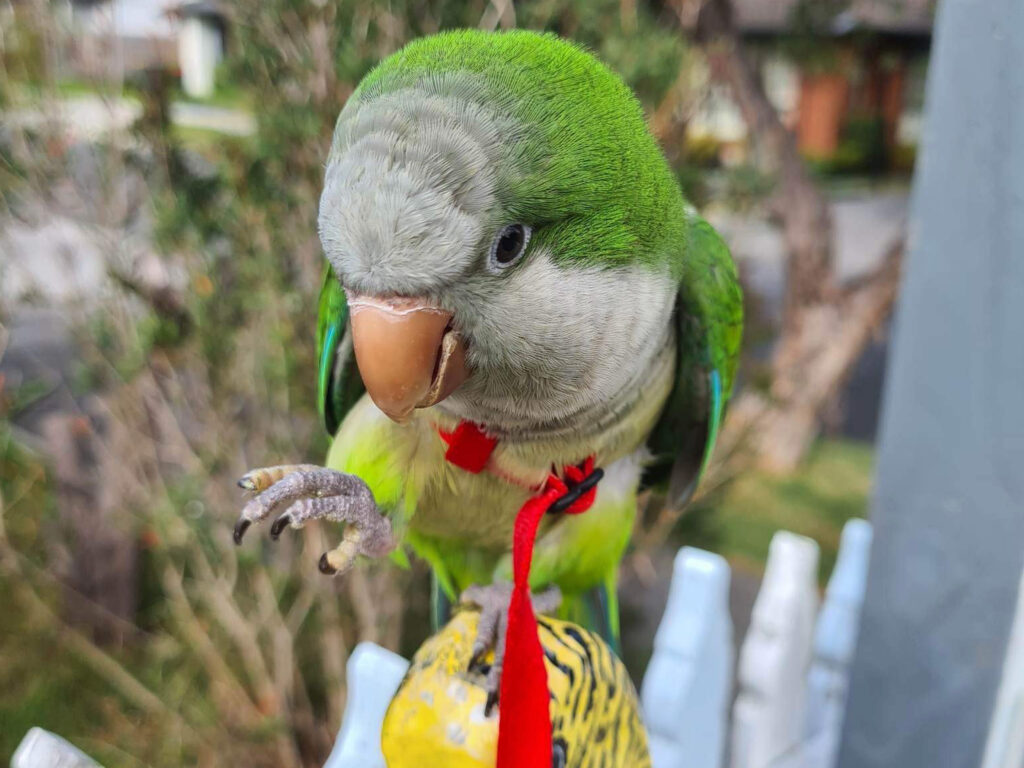
Teaching Your Bird to Wear a Harness
The number one golden rule for harness training is: DO NOT JUST SHOVE YOUR BIRD IN A HARNESS WITHOUT TRAINING IT FIRST.
This may work in the short term, but it very rarely leads to a bird who will accept happily wearing a bird harness in the future. More often than not, what the bird is actually learning is to be afraid of being forced into a harness, which can become a full-fledged phobia of having a harness anywhere near them.
If you force a bird to do something you are teaching your bird that it needs to bite to say no. This can lead to a more aggressive, dangerous relationship with your bird overall and it can be very difficult to reverse.
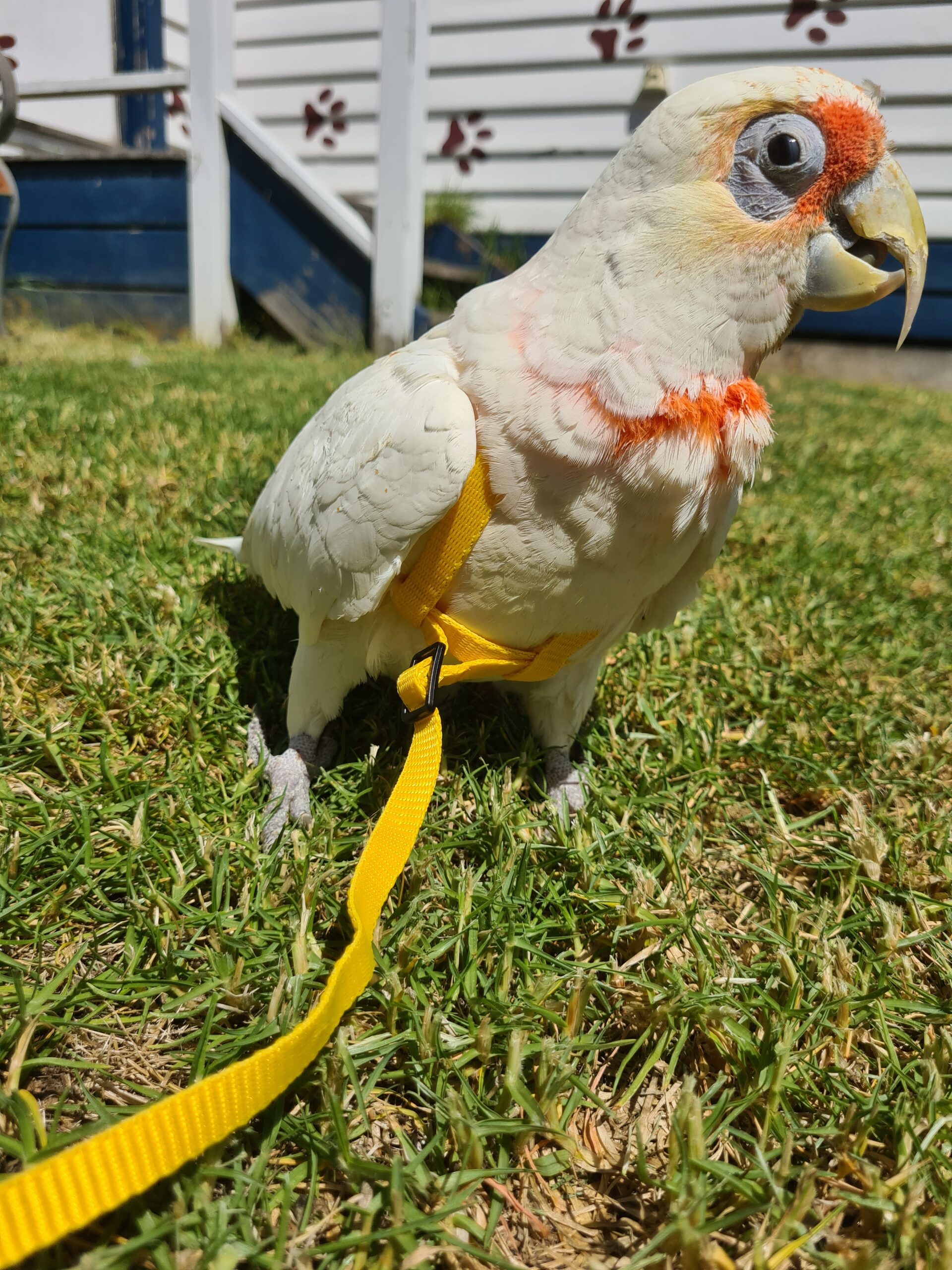
How To Start Harness Training?
First rule of training: it's not the animal - it's the human that needs work. Harness Training starts with YOU first. If I had a dollar for every time someone wants me to board their bird and give them a fully harness trained bird back at the end of boarding... I say NO for a reason. Training starts with YOU. There are 2 things YOU need to get right from the beginning
- Choose the right harness for your bird.
The two top brands on the market that I recommend are the JMK Harness and the Aviator Harness. I do not condone leg tethers, or tethering in general. No harness should be used to secure your bird to something unsupervised. I have found that Aviator harnesses come in smaller sizes than the JMK Harnesses, so often work better for the smaller birds. JMK has a really comfortable style which some birds seem to prefer to put their heads through. Both types of harnesses work well, so the choice will depend on the type of bird you are working with and what you are both the most comfortable with. - You need to be able to put the harness on your bird with confidence.
You need to know exactly which bit of bird goes through which bit of harness before you get anywhere near trying to put a harness on a real bird. If you can't put a harness on a stuffed toy bird in under 5 seconds, you are NOT ready for the real thing. You need to know how the harness moves and how it adjusts. Any hesitation or confusion from you is going to be picked up by your bird and it will cause fear. Educate yourself first.
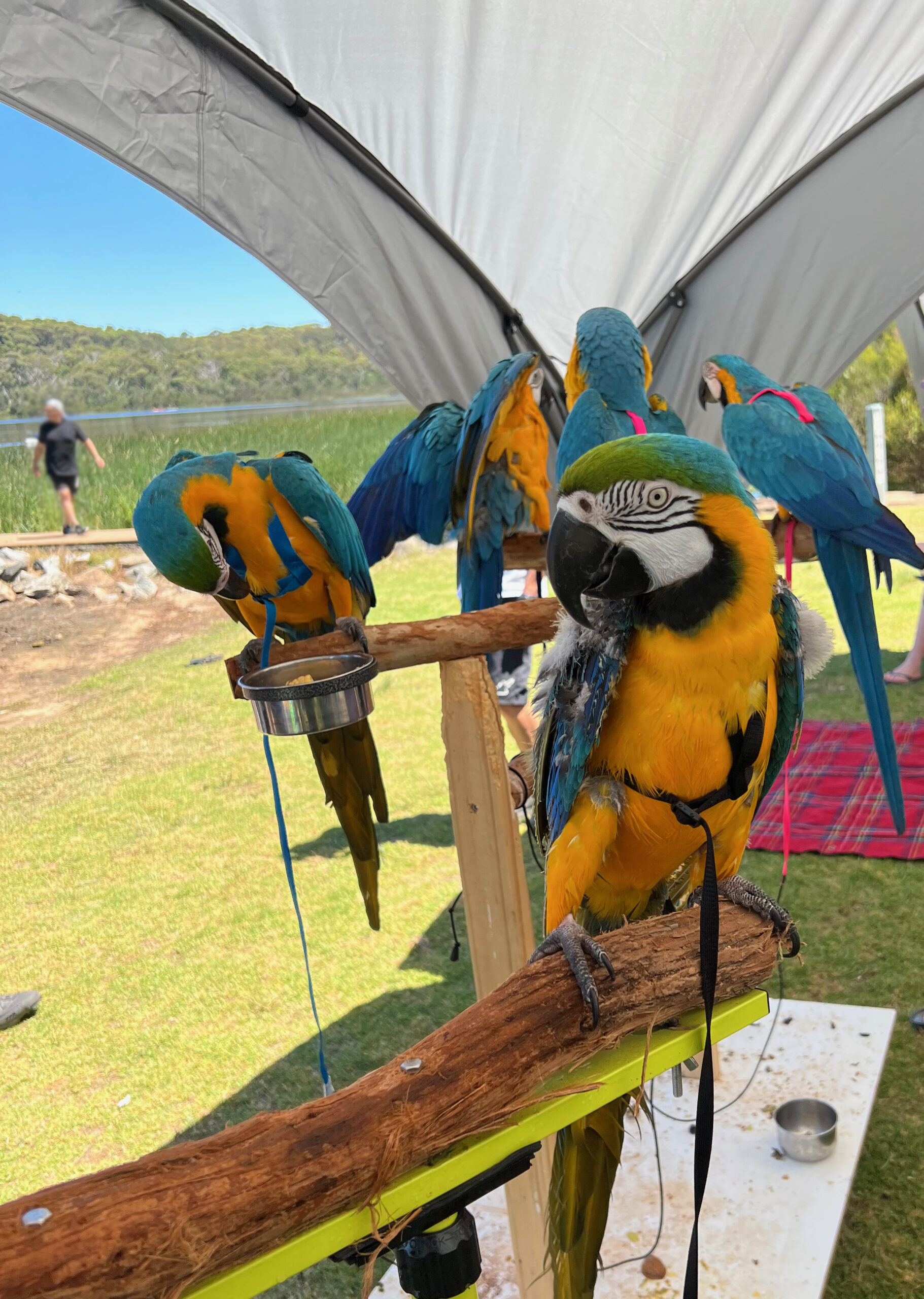
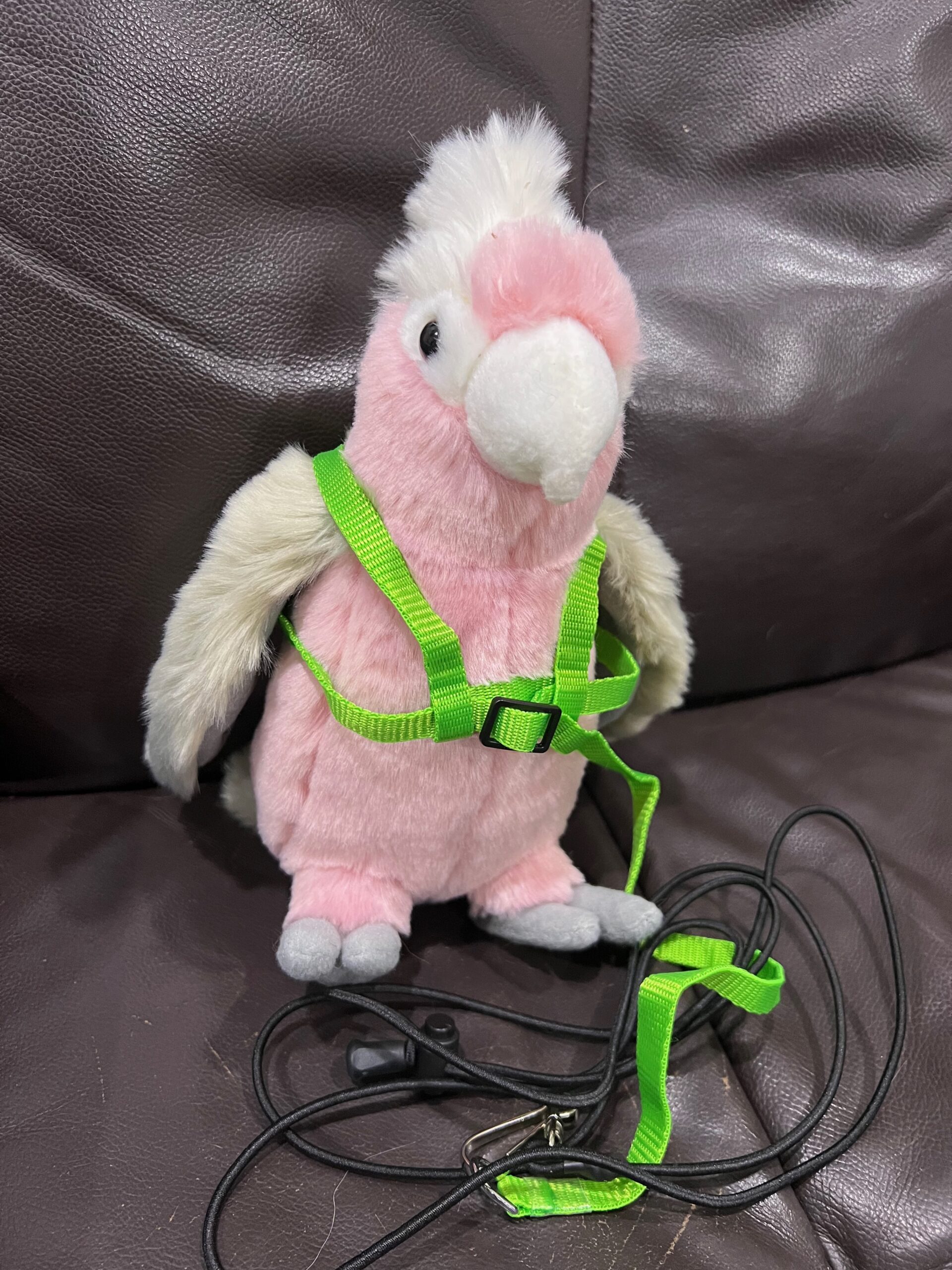
Training Your Bird
There are a number of skills that you need to build with your bird in order to get them to cooperatively wear a harness. Ideally, these behaviours should be individually trained and encouraged before you chain them together. A training plan needs to cater to your individual bird's needs and previous experiences.
A bird that is coming from a bad harness experience is going to need to rebuild a lot of trust before you even consider putting a harness on. The process of overcoming this sort of fear is more than I can cover in a blog post, so if this is your situation with your bird, I encourage you to book a behavioural consultation for help.
Fear can be one of the hardest things to overcome with your bird. Remember that forcing your bird into a harness is going to make this much worse!
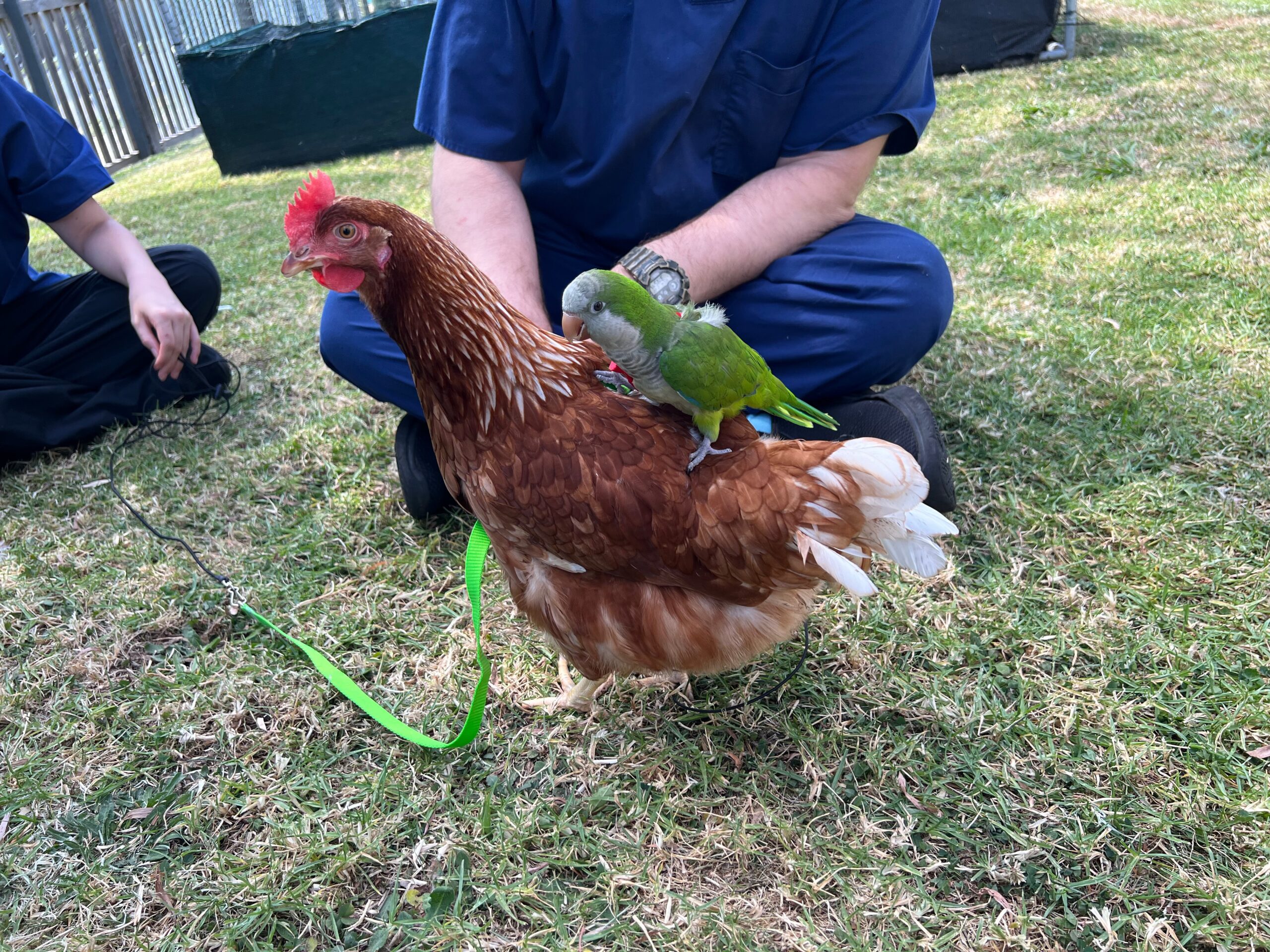
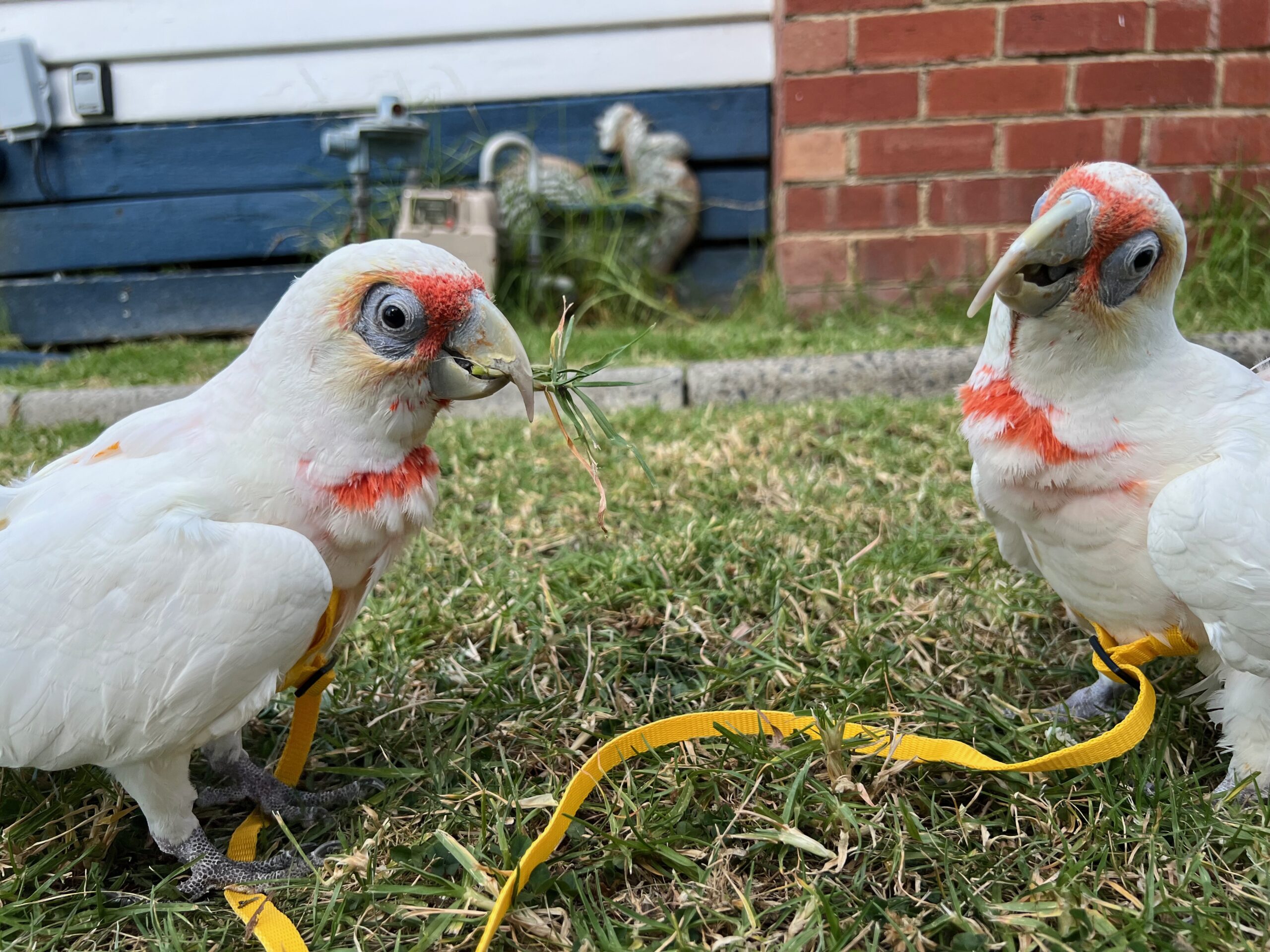
A Harness Training Plan Should Include the Following:
- Touch training. Your bird needs to be comfortable with being touched all over, with stretching out their wings in your hands.
- Target trained. Target training is more than touching a stick. It is a behaviour that can be used to lead into so many other behaviours - such as putting your head in and out of a harness.
- How to put on every part of a harness and how to take it off needs to be taught.
- Tolerance of people approaching. You better believe a bird on a harness is going to attract attention when you are out and about. Your bird needs to be able to cope with people coming up to them.
- Novel situation training. Is your bird used to going outside? Going into an unfamiliar environment can be terrifying for a bird.
- Endurance training. Teach your bird to tolerate the harness for the length of time they will be wearing it. You will need to teach the bird not to chew it.
- Recall flight training. If something goes wrong. You want a backup plan to get your bird back.
- Other behaviours specific to your bird's individual needs.
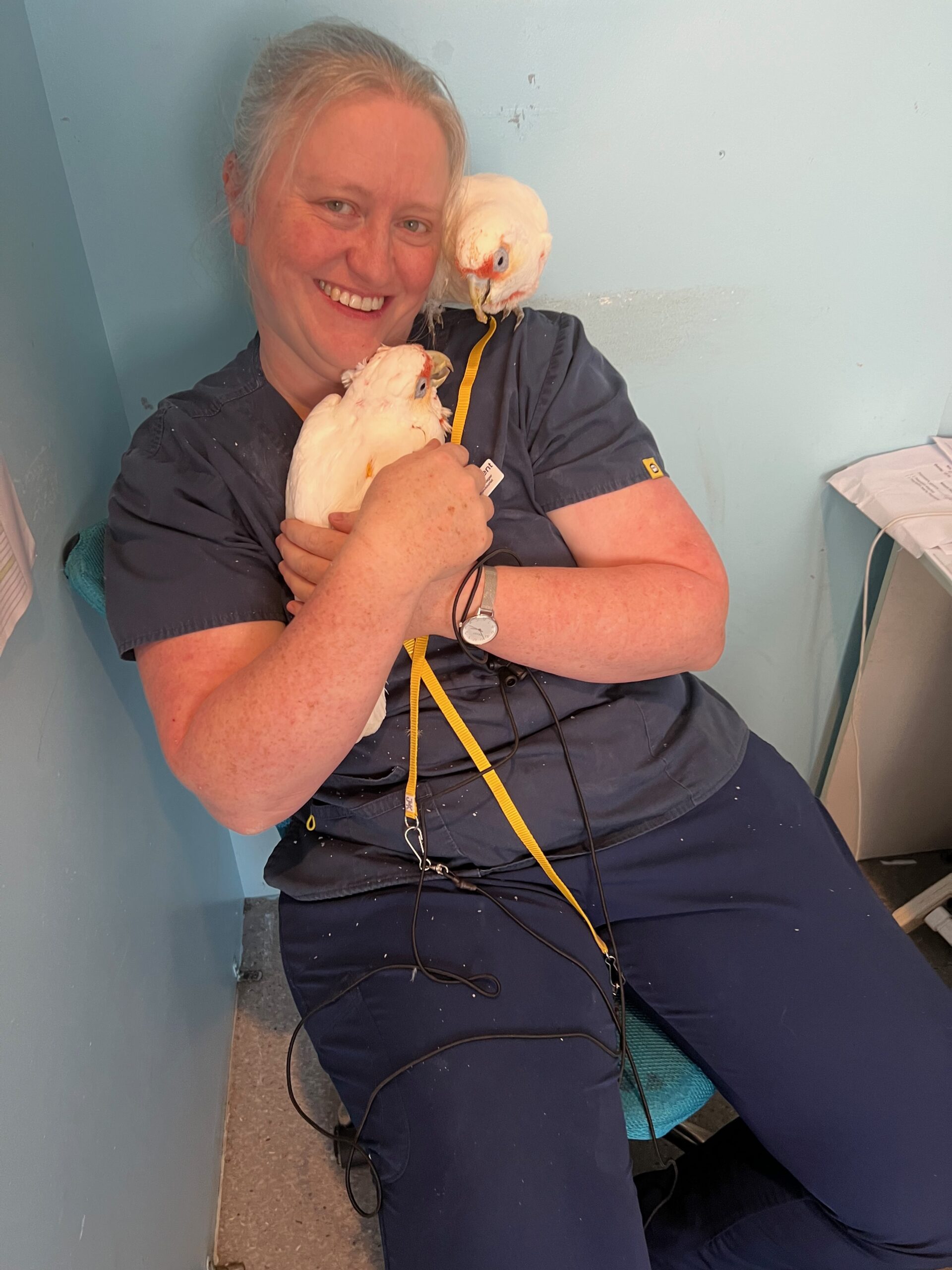
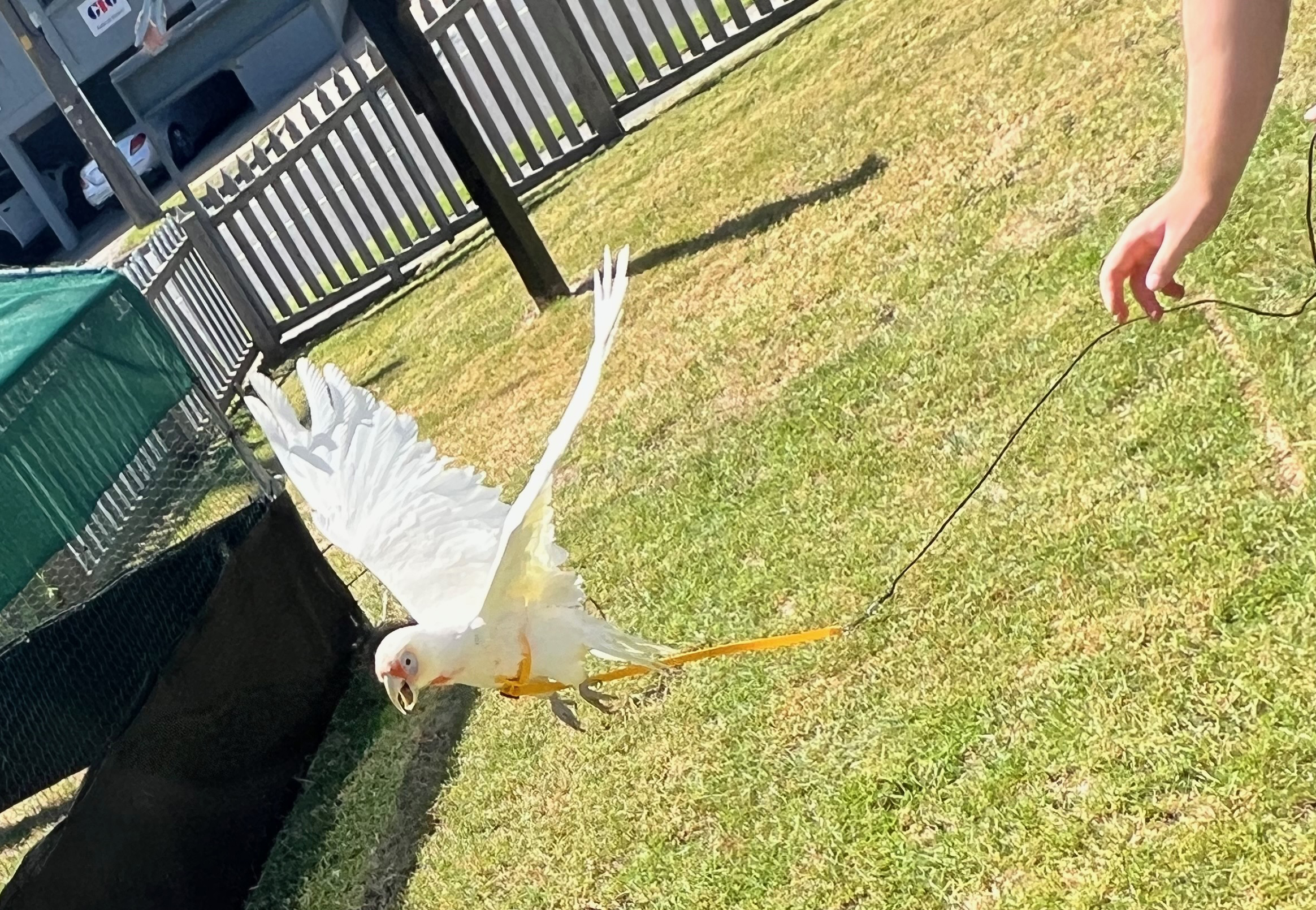
Help Is Available
I have been harness training birds for many years and have a proven history of success. I offer in-person consultations, group harness training and online training. Contact me for more details or book online for a behavioural consultation.
Harness Training is not something you want to get wrong. Accidents happen more frequently with poorly trained birds. An accident with harness training can result in your bird becoming afraid of a harness. At worst, it can result in the loss or death of your bird.
These days, everyone wants to be a bird trainer and many claim to be. Do not assume that someone with what appears to be a beautifully trained macaw under the age of 10, knows what they are doing. Make sure your trainer has the right experience behind them.
Larger, immature birds are significantly easier to train to wear a harness and they can give the trainer/owner a false sense of confidence. Similarly with your own bird, be aware that all birds change over time. You will be training and re-training your bird for their whole life.
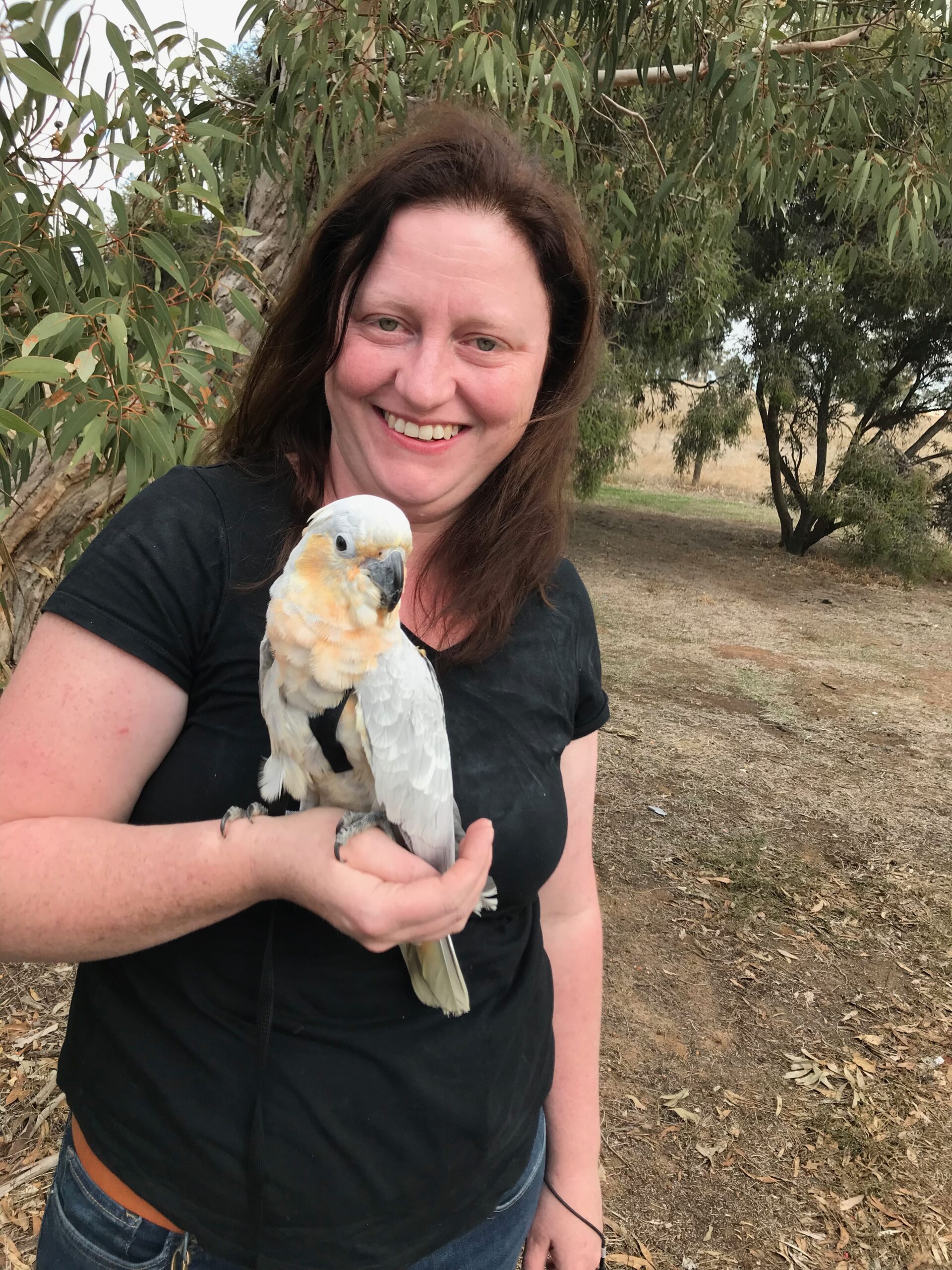
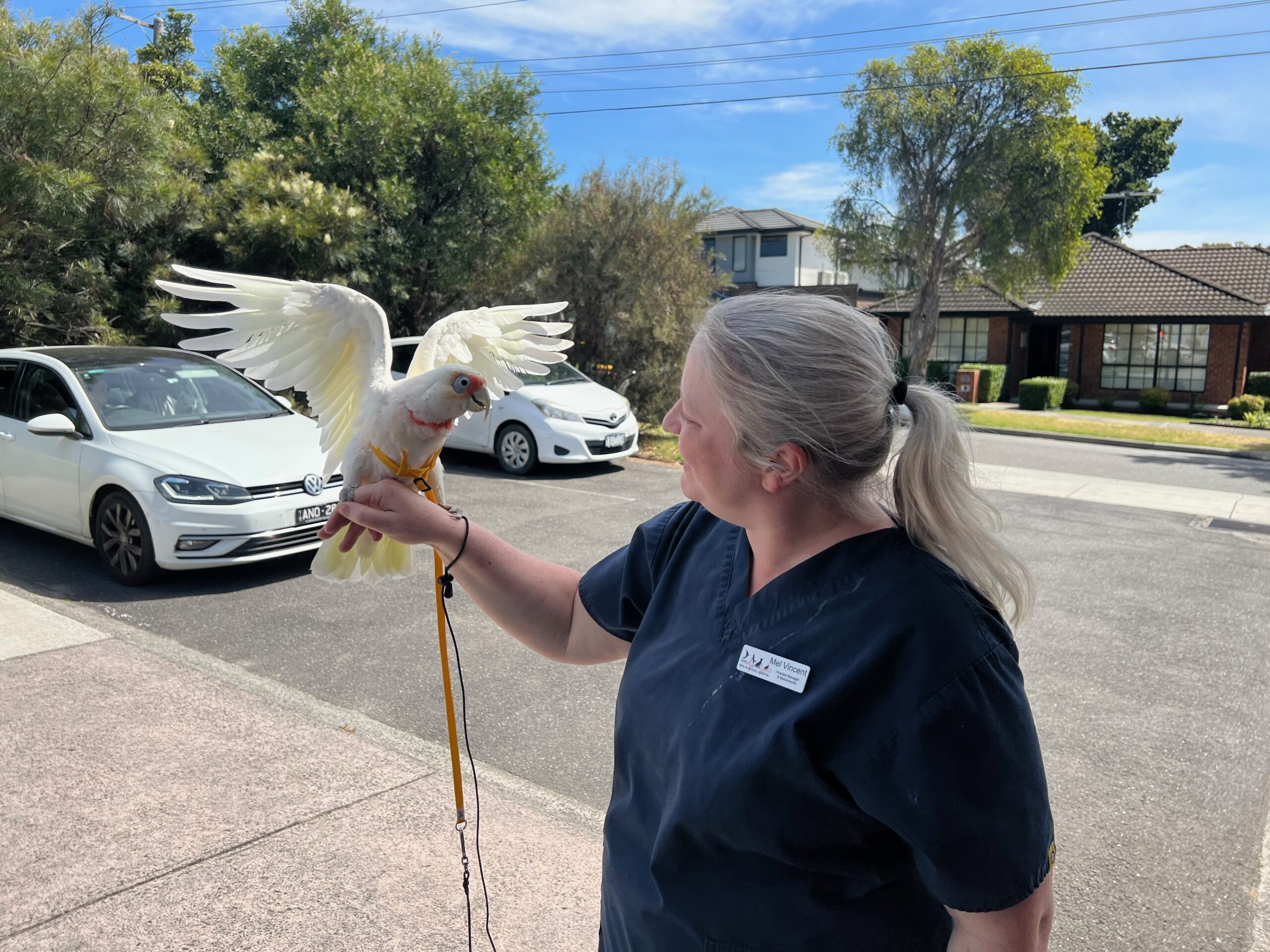
Where Can You Buy A Bird Harness?
Bird Vet Melbourne has an online store that stocks a lot of vet recommended product.
This includes the two brands of bird harnesses that have been discussed in this article.
JMK Harnesses are a larger fit than the Aviator Harness, so make sure you know your bird's weight when selecting the right harness for your bird.
